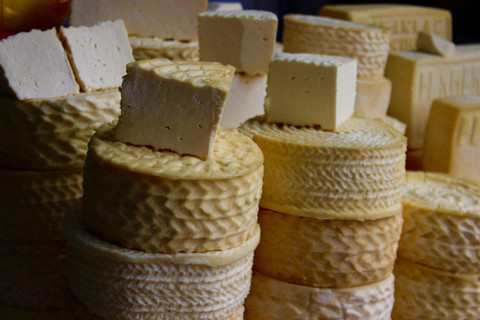Why Is Cheese Expensive? It Doesn't Have To Be.
8th Jun 2021
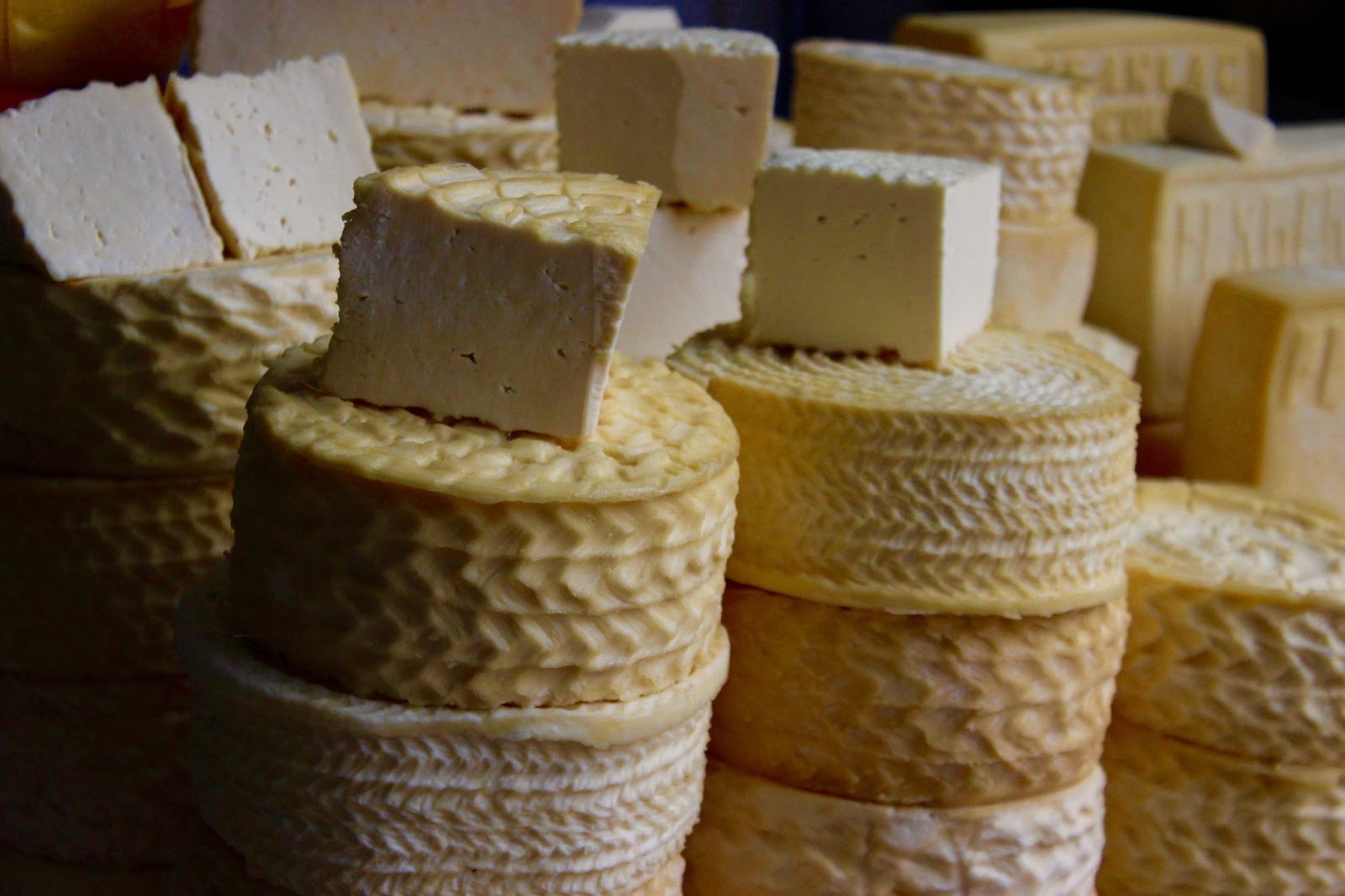
As can be confirmed by a quick glance down the dairy aisle at your local grocery store, cheese can get expensive. The final retail price of cheese is affected by many contributing factors, but you also have other options if you don’t want to spend those retail prices.
Like just about any product, the relatively high price of cheese is determined by the natural laws of supply and demand. American dairy farms have operating costs that come close to and even exceed the value of their product, so dairy products are also priced in light of production costs.
Let’s set the scene. Ever since you were a kid, you’ve dreamed that when you grew up, your fridge will always be full of cheese snacks to fulfill all of your adolescent desires. Yet now, you walk down the dairy aisle with your adult job and adult money and you realize that filling your cart with that much cheese could be expensive enough to require you to get a second job–why is that? The economic side of cheese is just as diverse as the number of cheeses out there, so let’s explore them.
Cost of the Top 10 Most Popular Cheeses

When considering the price of cheese, also think of what goes into its production and the logistical obstacles that come with shipping a food that’s so fragile. If a shipment of cheese freezes or gets too hot, it could be ruined. As touched on above, cheese is priced at the intersection of supply and demand, but specific attributes of some cheeses like aging time and shelf life affect their prices as well.
The list below explores the top ten most popular kinds of cheese in the United States and shows the pounds per person consumed annually. This statistical data is provided by the U.S. Department of Agriculture (USDA), and the pricing data is from the largest grocer in the nation: Walmart. If you fancy genuine artisan cheeses, you’ll likely be spending even more.
- Mozzarella: $3.36/lb - $6.68/lb
- Cheddar: $3.36/lb - $9.07/lb
- Processed Cheeses: $1.97/lb - $5.98/lb
- Italian Cheeses Excluding Mozzarella: $5.78 - $8.76
- Colby, Washed Curd, Stirred Curd, Monterey, and Jack: $3.36 - $7.32
- Cream Cheese: $2.56/lb - $4.24/lb
- Cheese Spread: $3.07/lb - $6.44/lb
- Hispanic Cheese: $3.63 - $5.56
- Swiss and Gruyere: $3.44/lb - $9.31/lb
- Muenster: $3.68/lb - $7.17/lb
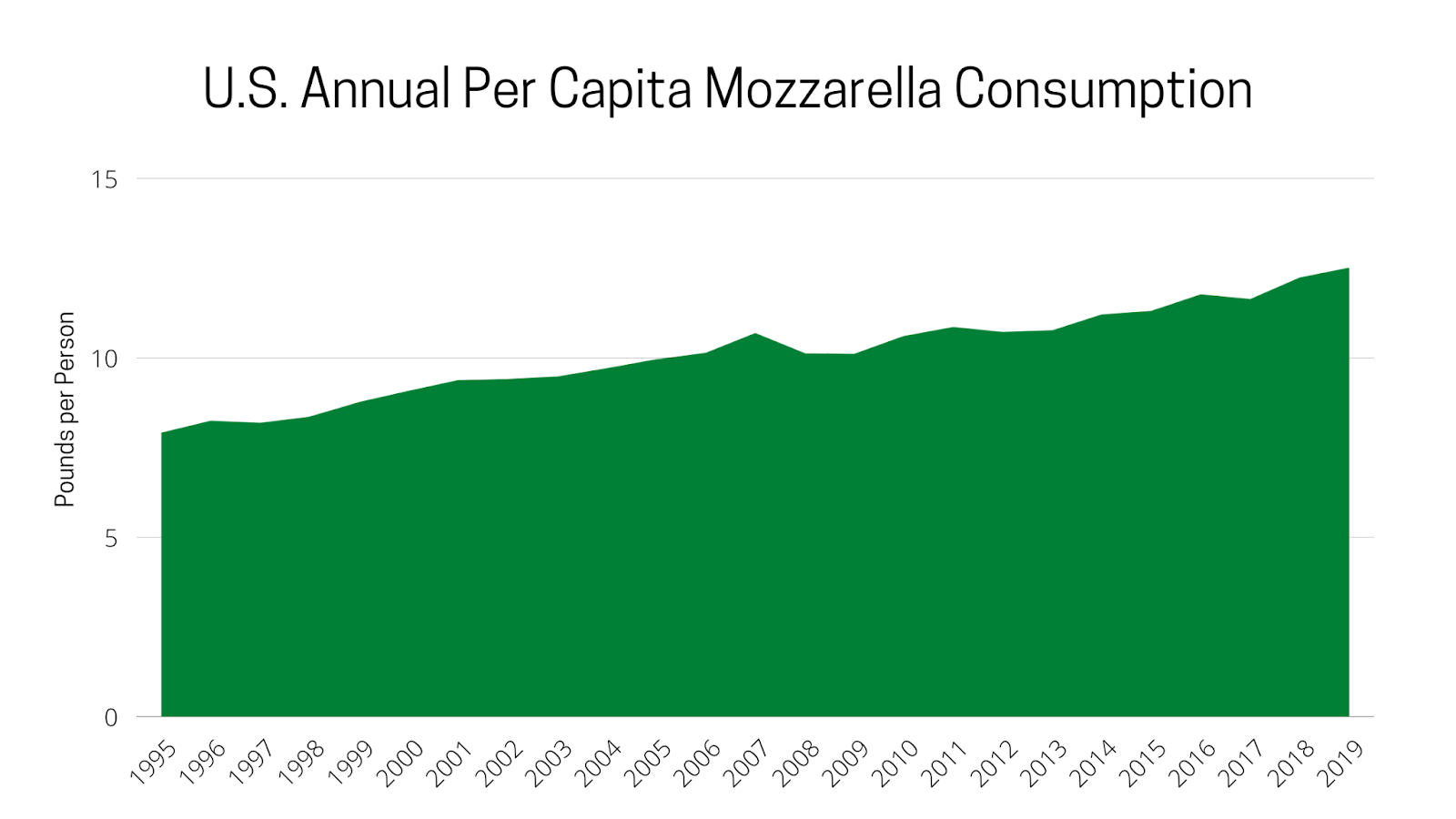
Mozzarella easily tops the list as the nation’s most popular and most-consumed cheese. Think about how many acres (yes, acres) of pizza are consumed daily. Just about all of those pies are topped with a healthy layer of mozzarella. If the orderer knows how to live life to the fullest, their pizza might even come with a side of mozzarella sticks.
One of the reasons Mozzarella can be expensive is its ever-increasing demand. Mozzarella is becoming a staple in most households that’s used on everything from pizzas to omelets, and the data shows Americans are wanting more and more of it. Fresh mozzarella in particular has a relatively short shelf, earning it an elevated price compared to low-moisture mozzarella.
Luckily, Mozzarella is also one of the easiest cheeses to make! You likely already have most of the supplies and ingredients you’ll need to make your own mozzarella. All it takes is milk, an acid or acid-producing culture, and a recipe to walk you through the steps.
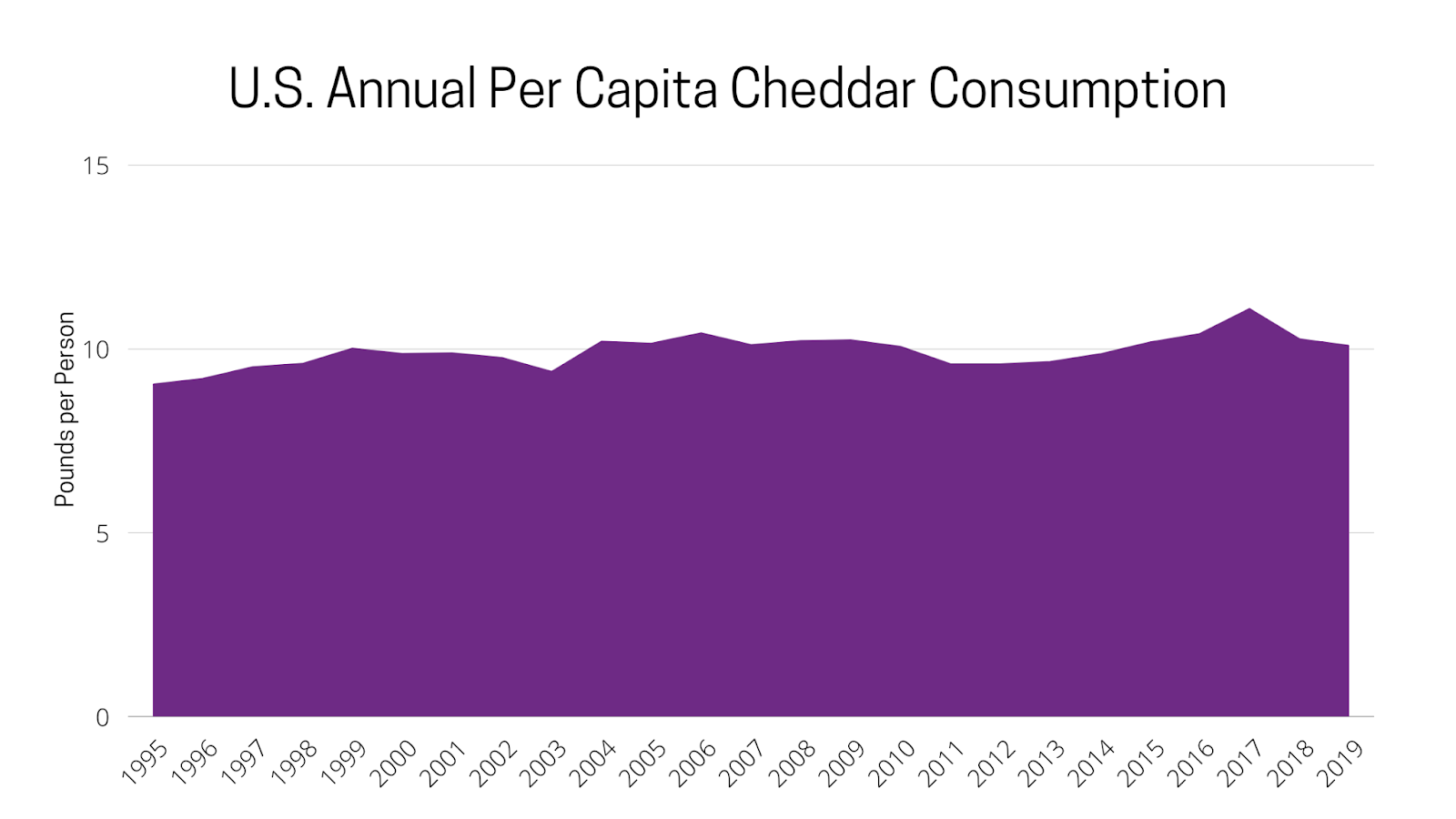
Cheddar is a very familiar cheese in America with distinct mild and sharp variants, best suited for dishes like mac and cheese or even on its own. Its unique attributes and flavors earn it a place amongst fine-dining dishes and snack foods alike.
The price of cheddar cheese may seem high, but consider the amount of time and effort it takes cheesemakers to produce. Cheddar is an aged cheese, meaning its signature taste and texture is earned over time. That aging process can take anywhere from two months for mild cheddar to upwards of a year for sharp cheddar.
If you’d rather not pay for someone else’s time, you are plenty capable of making your very own cheddar cheese. Cheddar is a moderately difficult cheese to make, but the results can be incredibly rewarding. Our deluxe cheddar kit has everything you need to get started!
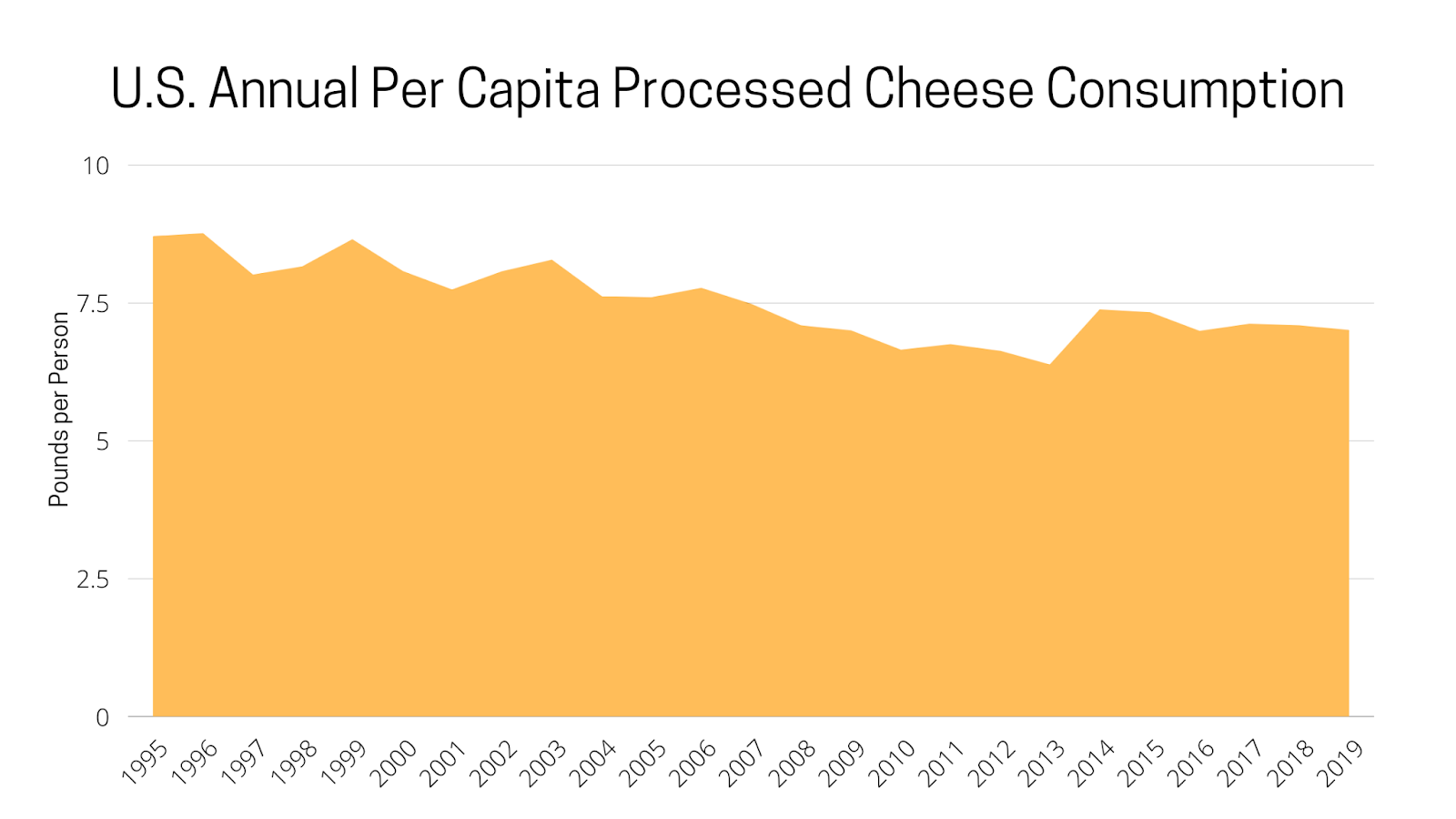
Despite not being legally recognized as “cheese” by the FDA, processed cheese remains the third most-consumed cheese product in the nation. Just about every burger and cheesy fast food dish will use some sort of processed cheese. It’s interesting to note the slight yet statistically significant downward trend of processed cheese consumption. Perhaps people are realizing the boundless flavor available in fresh, non-processed cheeses, and maybe even in cheeses of the homemade variety. If you’re one of those people, we at The CheeseMaker offer all the supplies to make fresh cheese from home!
Processed cheese products do typically use some sort of legitimate cheese in their production. As a result, the price of processed cheese will fluctuate with the cheeses’ price used in its production. It may be inexpensive, but the unique texture and low melting point of processed cheese are thanks to its high moisture content, meaning you’re paying for more water than you may be in other cheeses.
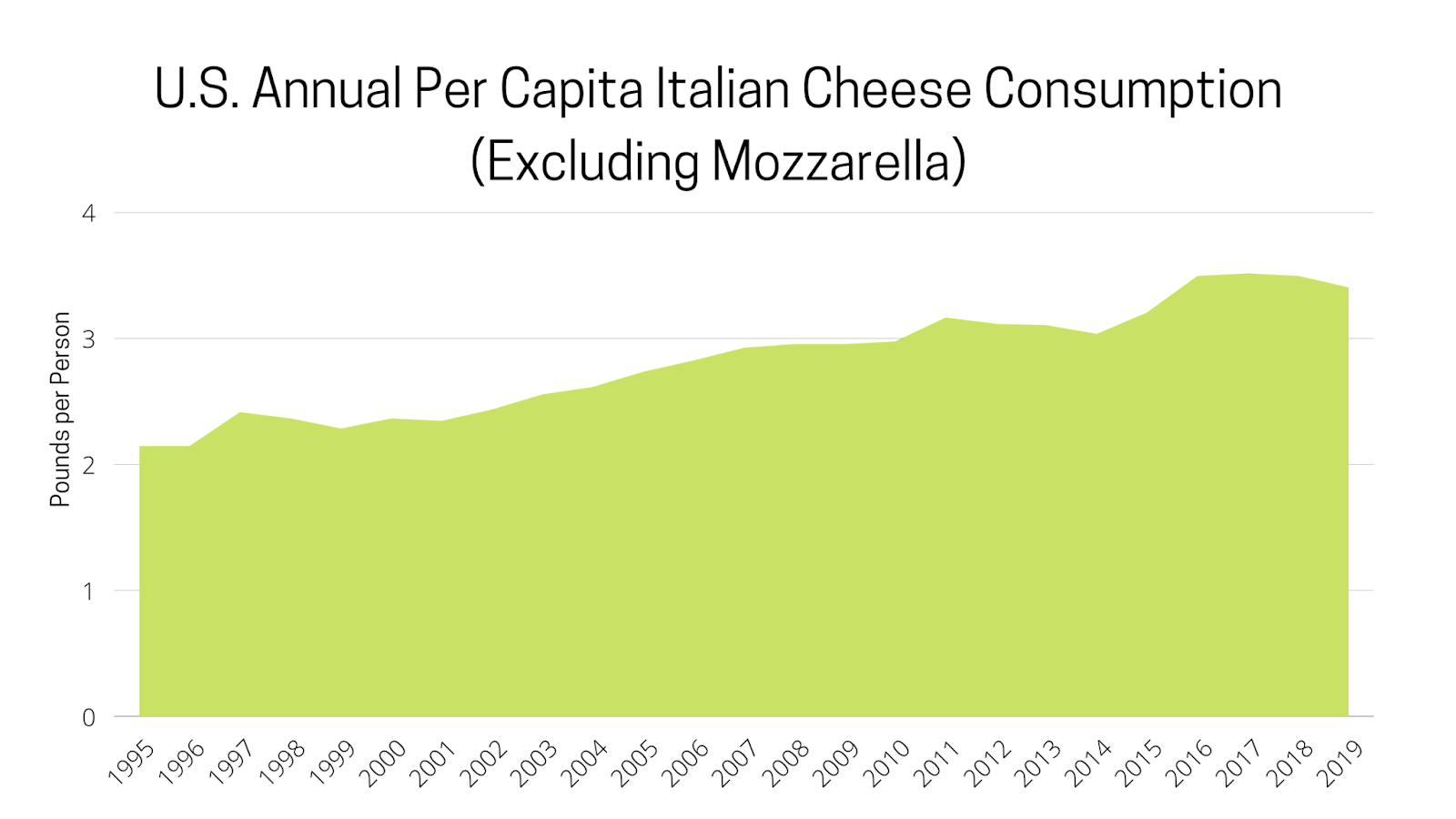
These Italian cheeses include parmesan, romano, and more that originate from Italy. Note, the cheese consumption factored into this chart is not necessarily of imported cheese–plenty of commercial cheesemaking companies produce Italian-style cheeses in the U.S.
The prices of these cheeses are relatively high due to both their aging time and their weight being less made up of water. Romano and parmesan are naturally much lighter cheeses by volume due to a lower moisture content than most other cheeses.
You can make these cheeses at home, but they do require a significant time commitment. If you’re willing to wait over a year for a cheese that is uniquely yours, we have all of the supplies you need to get there.
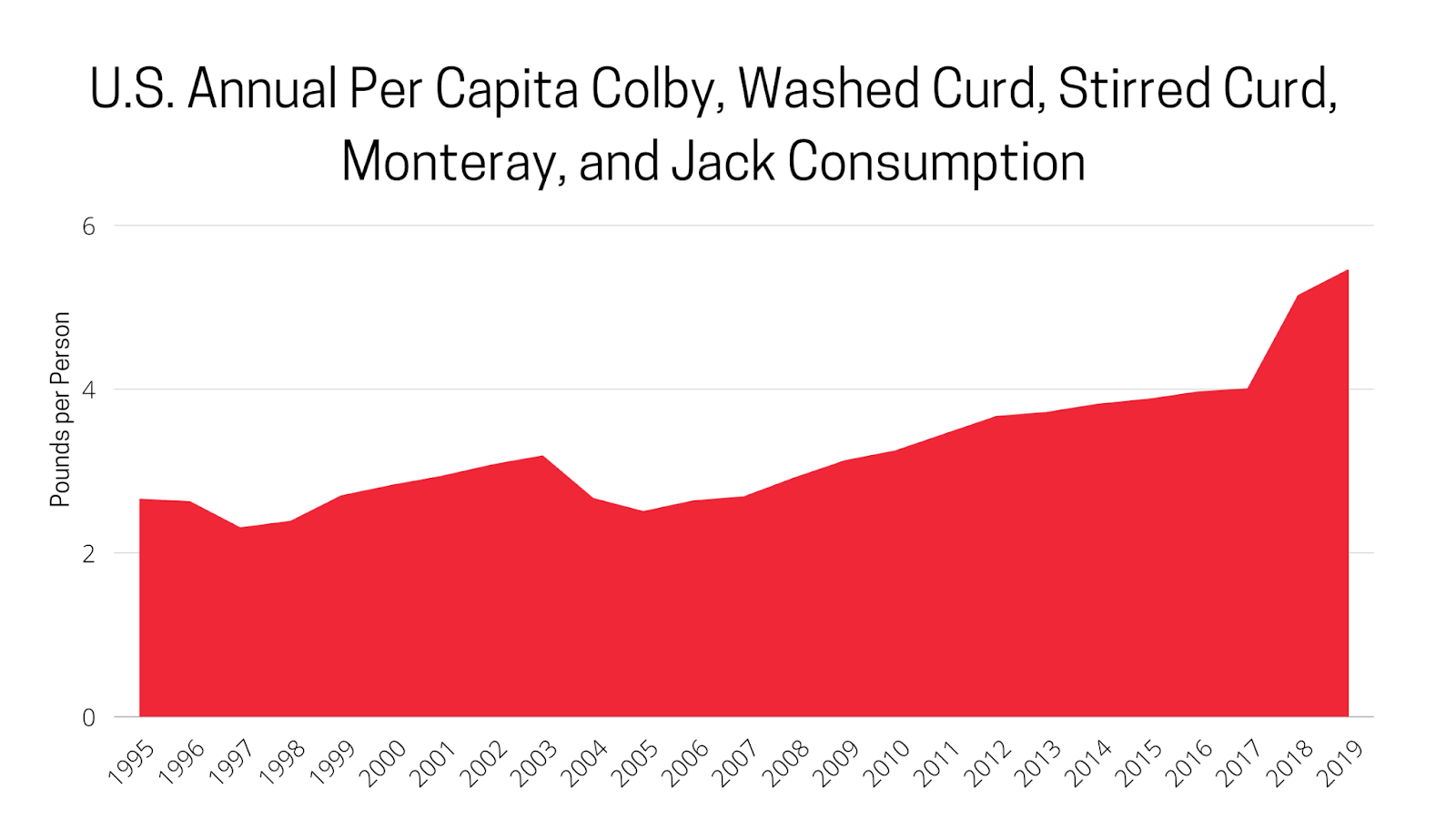
If you’ve ever purchased a meat and cheese platter from your local grocer, odds are you’ve bought one or all of these cheeses. The steady upward slope in their consumption suggests that you might find a similar uptake in demand for crackers and wine, but that’s just a theory.
These cheeses are incredibly versatile and offer a rich, creamy flavor. They’re great on their own or as additions to some of your favorite dishes, so just imagine the incredible flavor making your own cheese could add. Our deluxe soft and hard cheese-making kit has everything you need to set your charcuterie board apart from store-bought counterparts.
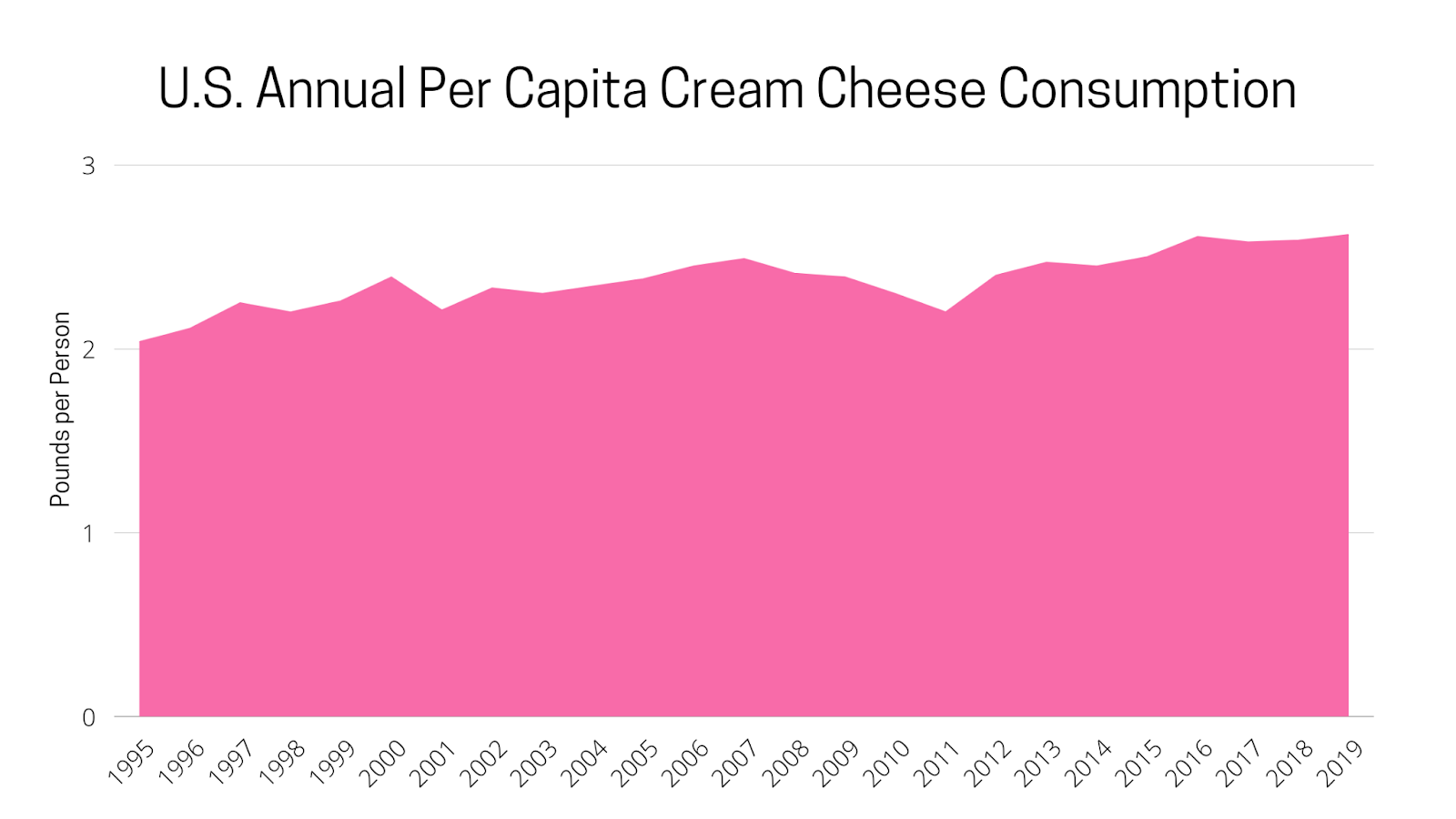
Cream cheese has seen a relatively stable demand over the past twenty years with a slight upward trend. While it may have a lower price per pound than many other kinds of cheese on this list, its high moisture content means you’re again paying for more water than in other cheeses.
Cream cheese is another cheese that isn’t too challenging to make and can yield delicious results. You can step up your morning routine with a bagel and fresh, homemade cream cheese, or even give your cheesecake that extra edge to make your dinner guests swoon.
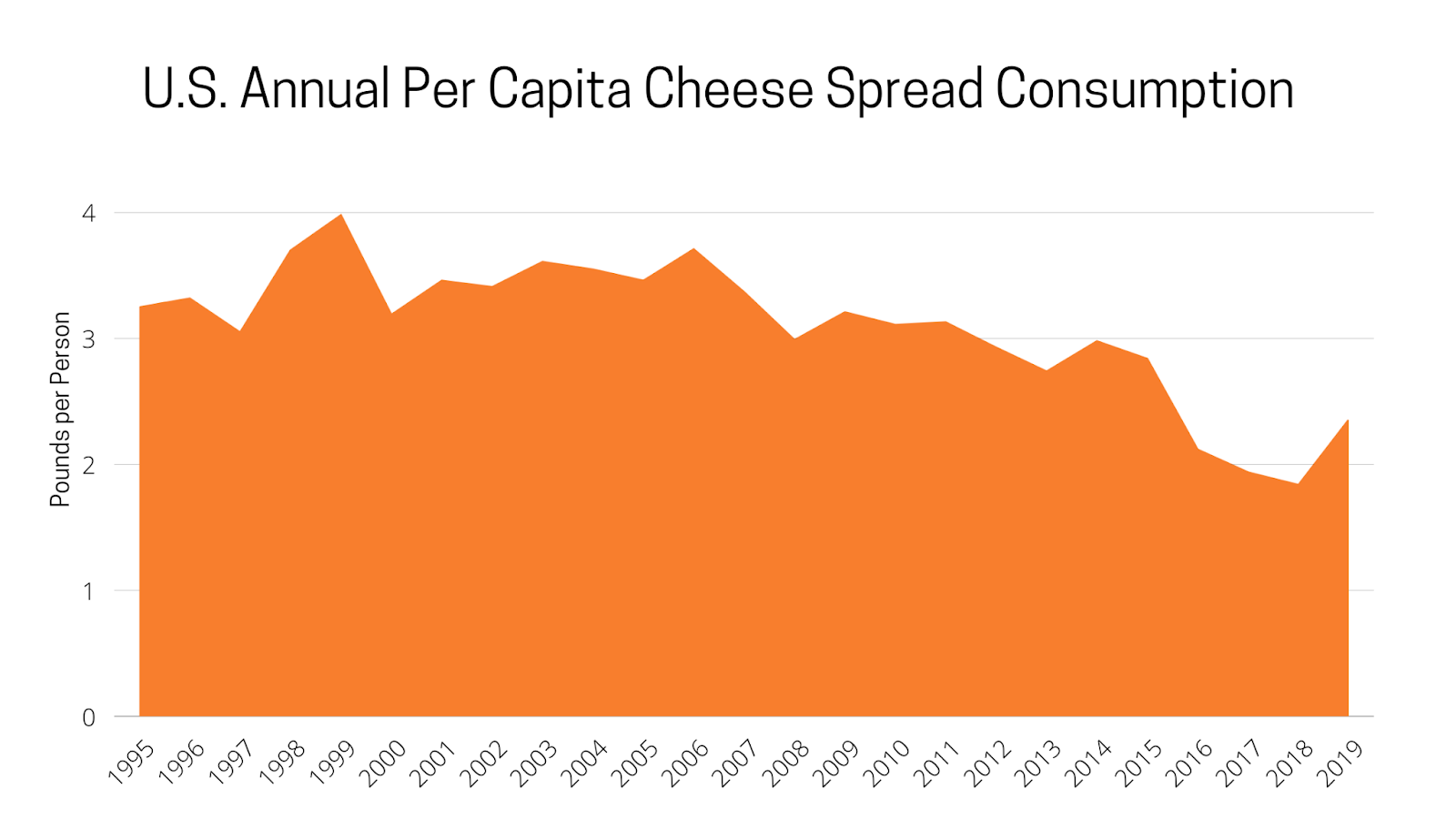
Cheese spreads have been becoming less popular as time goes on, but there are still millions of pounds of it sold and consumed in the U.S. every year. These spreads can be made from cheeses with a naturally spreadable texture or by adding other ingredients and blending them to achieve the desired consistency.
With these, we invite you to experiment! If you want to try to make something that you truly can’t find anywhere else, make some of your own cheeses and see how you can add to them to create decadent spreads.
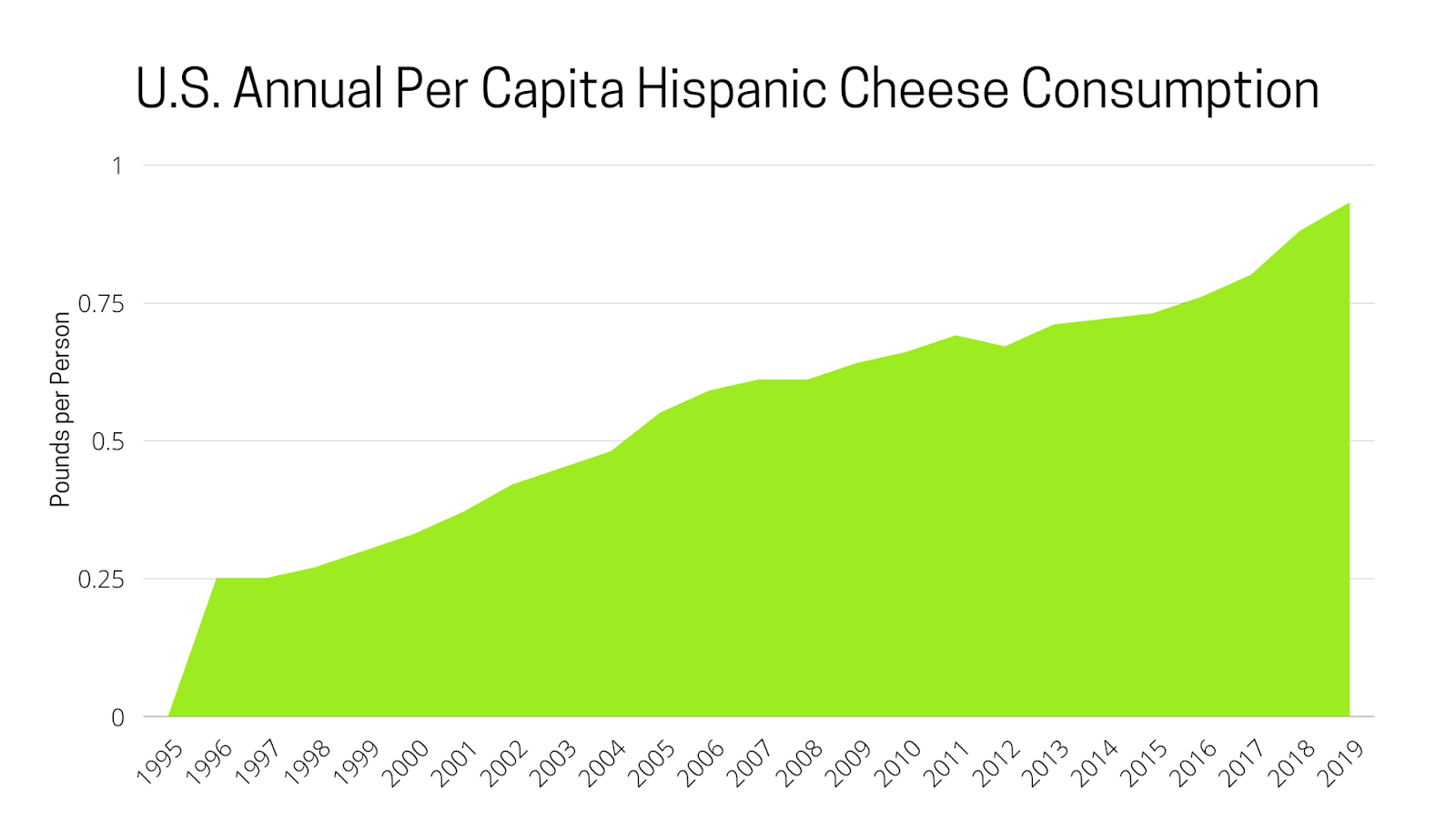
In the data provided by the USDA, all of the Hispanic cheeses sold in the U.S. are combined to show their collective demand and consumption. As you can see by the steep rise in consumption, people are really starting to catch on to the goodness of quesadillas.
All jokes aside, Hispanic cheeses are a great way to add some diversity into your menu and help you create dishes true to authentic recipes. If you’d like to try your hand at making your own Hispanic cheeses, take a look at our selection of cheesemaking supplies and ingredients!

If you have a keen eye, you’ll see the demand for Swiss and gruyere cheeses has remained relatively constant. Swiss cheese is aged for upwards of four months, so it’s no wonder it retails for up to nearly ten dollars a pound. Some Swiss cheeses can age for a year or more, so you can be sure the price will reflect that investment of time.
If Swiss cheese is one of your favorites, be sure to see how much better your own homemade Swiss cheese can be! Between our supplies and know-how, we at The CheeseMaker would be happy to help you along the way to making homemade Swiss cheese.
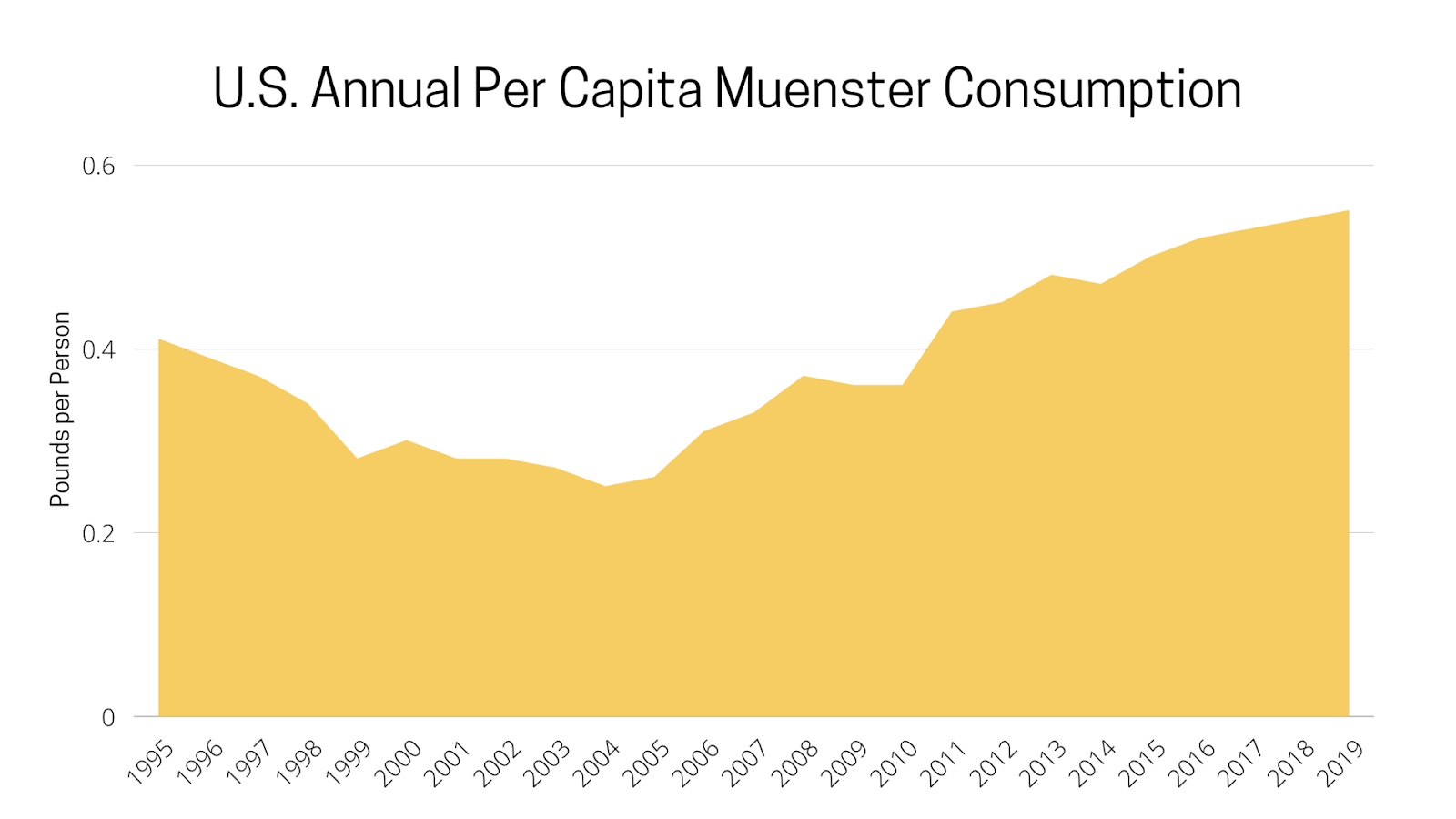
While the 0.5 lb/year consumption for Muenster cheese seems comparatively tiny to the 12 lbs/year seen for mozzarella, remember that’s a half-pound of cheese for every single person in the United States. For perspective, the last census marked our population to be over 300 million–that means about 150 million pounds of muenster have been consumed every year in recent years. That’s a monstrous amount of muenster.
Muenster is another aged cheese on this list, which explains why it tastes so good and why its price isn’t so cheap. Lucky for you, the aging period is only about five to seven weeks. In just a matter of months, you could be enjoying your own homemade Muenster!
Current World Circumstances
The COVID-19 pandemic has unsurprisingly affected the price of cheese. When the country goes into something as drastic as a nationwide shutdown, the supply chain turns to logistical pandemonium. The same holds true within the dairy industry. What’s typically an efficient operation loses its structure and simply can’t run as efficiently anymore, causing a rise in operating costs and, eventually, a rise in retail prices.
Things may have opened up, but if this pandemic has taught us anything, it’s that there is always the potential for economic volatility. Learning how to make your own cheese can afford you the skills that will allow you to continue eating delicious cheese, even in times of economic hardship where prices are driven up beyond your control. As will be briefly explained in the next section, these elevated prices might stick around for a while.
The volatility that’s shown in the recent market isn’t limited to the COVID-19 pandemic, either. As is explained in an Amber Waves article from the USDA, even climatic trends can affect milk and cheese production. If the weather of a certain year brings about lower yields of feed, dairy cows will have less of an opportunity to forage and, as a result, will produce less milk. A decrease in supply will then cause an increase in price; let’s look at why that is.
The Money Side of Cheese
If you look at the rising price of cheese and see it as dairy companies taking advantage of consumers, you might be surprised to see how that’s not necessarily the case. Creameries and dairy companies operate on relatively small profit margins when considering the costs involved with making cheese at a business level. Those business-level costs are also part of why making your own cheese can save you some money, but we’ll get into that later. First, let’s see how the laws of supply and demand affect cheese prices.
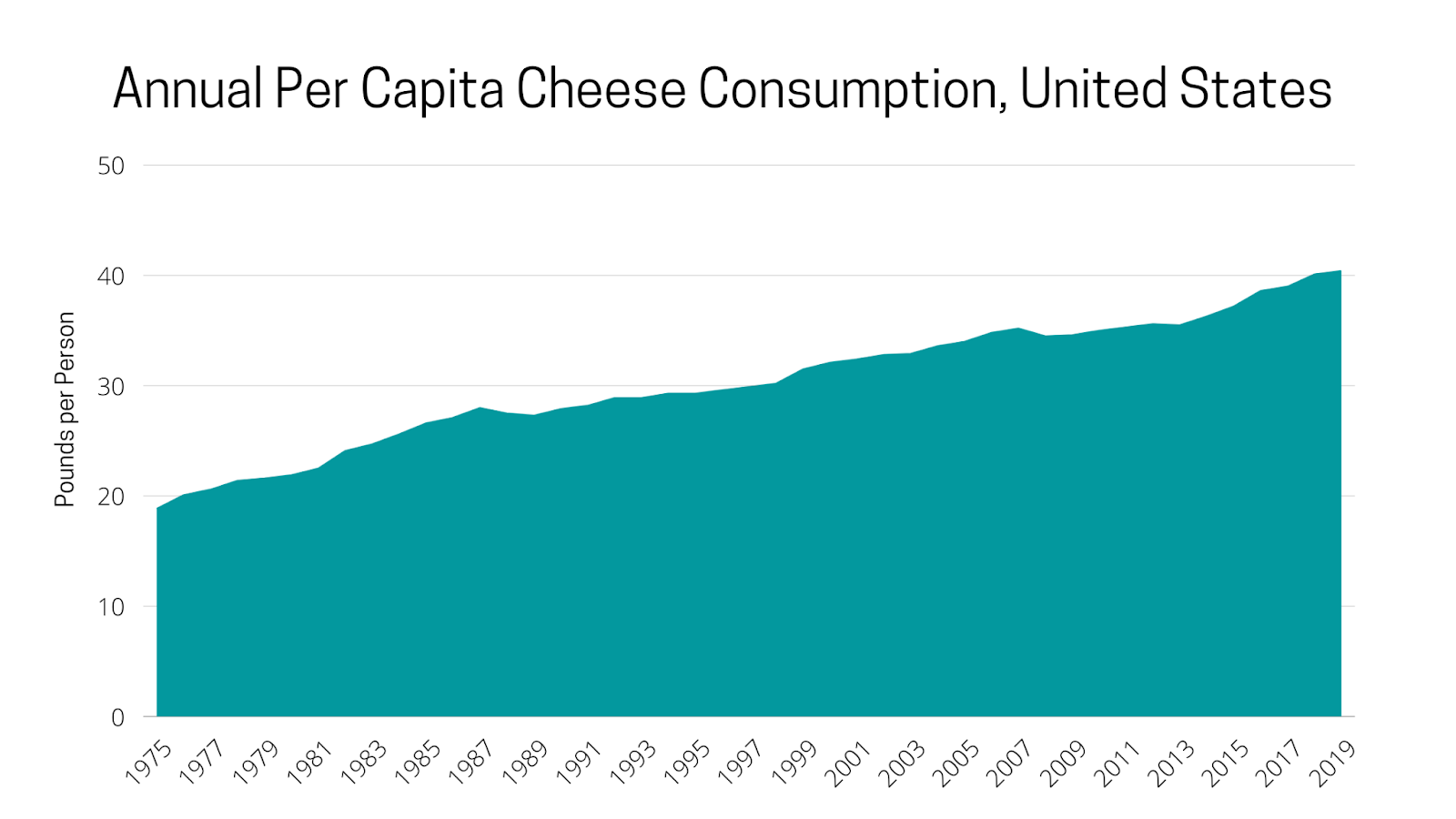
The consumption of cheese in the U.S. (which is directly tied to demand) has seen a steady increase, even doubling over the course of about thirty years. Higher demand typically means higher prices, but higher demand also attracts more cheese suppliers. If the supply and demand for cheese both increase proportionally, cheese prices will stay the same.
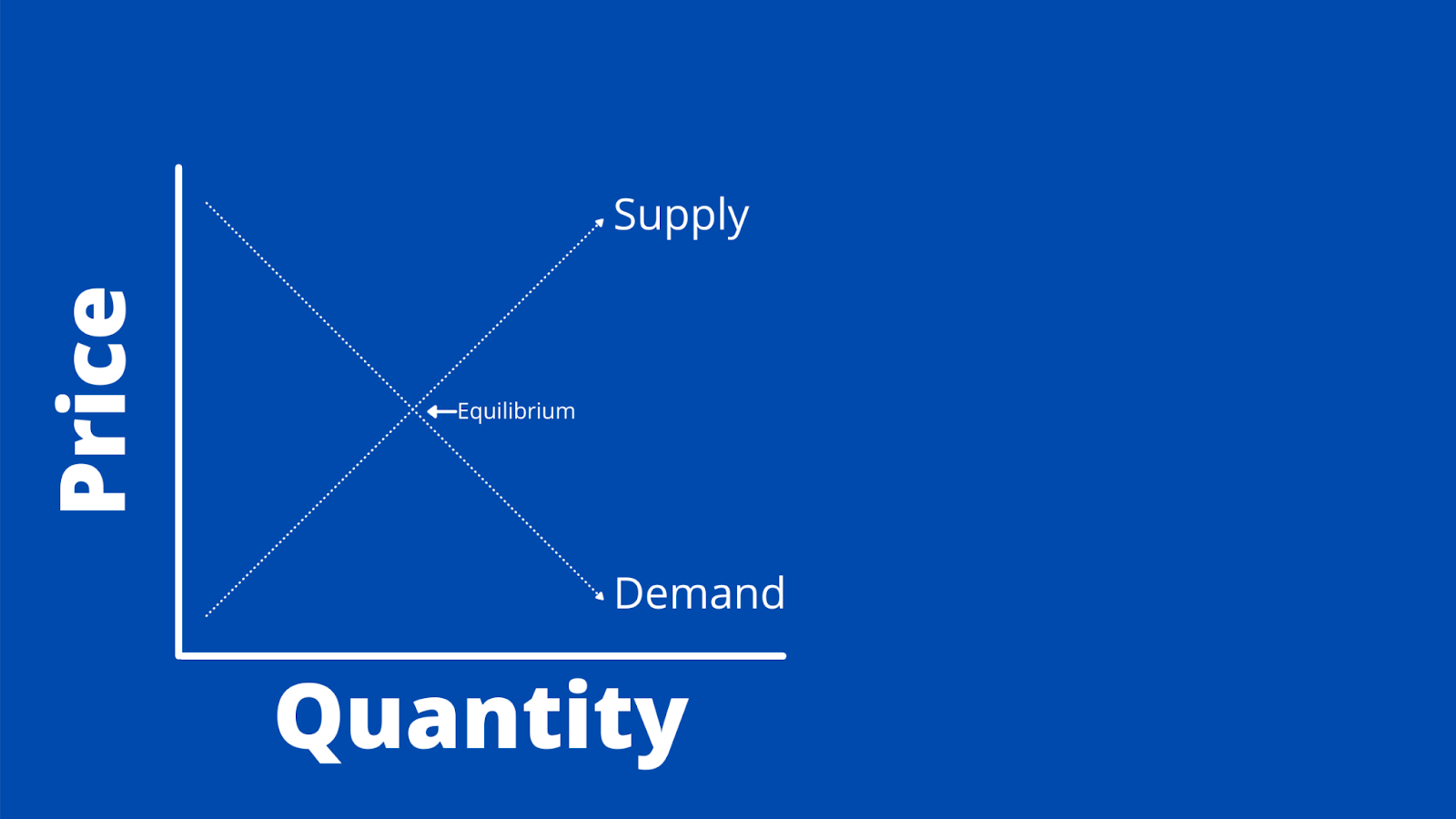
However, it’s not always that simple. Limiting factors such as the size of a dairy operation end up mitigating some of the competition in the cheesemaking industry and ultimately serve to increase prices. Let’s break that down a bit.
If the cost of making cheese is greater than the income received from selling the cheese, some dairy operations will inevitably go out of business. Fewer dairy operations producing cheese will then cause a decrease in supply. A decrease in supply without a decrease in demand will cause prices to rise, in theory offering dairy companies a better return to allow those that remain to stay in business. The price might stay elevated unless there are greater external changes. In addition, the previous graph showed that the demand for cheese is steadily increasing; that too will drive up prices (provided there is no change in supply).
Now, you can avoid some of the volatility of the commercialized dairy market by simply making your own cheese. With The CheeseMaker as your guide and source of supplies, homemade cheese can be a great hobby that yields truly decadent results. Making your own cheese may very well be the best way to maximize flavor, so do your palate a favor and give it a try.
Save Money, Make Your Own Cheese
Making your own cheese can be as personally rewarding as it is easy on your bank account. One of the greatest features of cheesemaking is that it doesn’t require a great deal of equipment to get started. In fact, you probably already have all of the equipment and supplies you’ll need in your home.
Let’s use Mozzarella as an example, being that it’s the most popular cheese in the nation. A pound of fresh mozzarella can set you back nearly $7. That may not seem like a large sum of money in itself, but if you’re one of the Americans contributing to its over 12 lb/year consumption, that can reach over $80 for just one kind of cheese. By making your own mozzarella, you can easily cut that price in half. And better yet, you’ll get to enjoy fresh, savory cheese like never before. Margherita pizzas, anyone?
Making your own cheese grants you access to artisan-grade cheese at a fraction of the price. Better yet, you can relish in the feeling of accomplishment when you break into a perfectly aged cheddar or camembert that got its start in your own kitchen. No matter if you’re just starting your cheesemaking journey or if you’re well along your way to becoming a master, The CheeseMaker is here to supply you with anything you might need along the way. Be it supplies, ingredients, or even some advice, we’ve got you covered.

